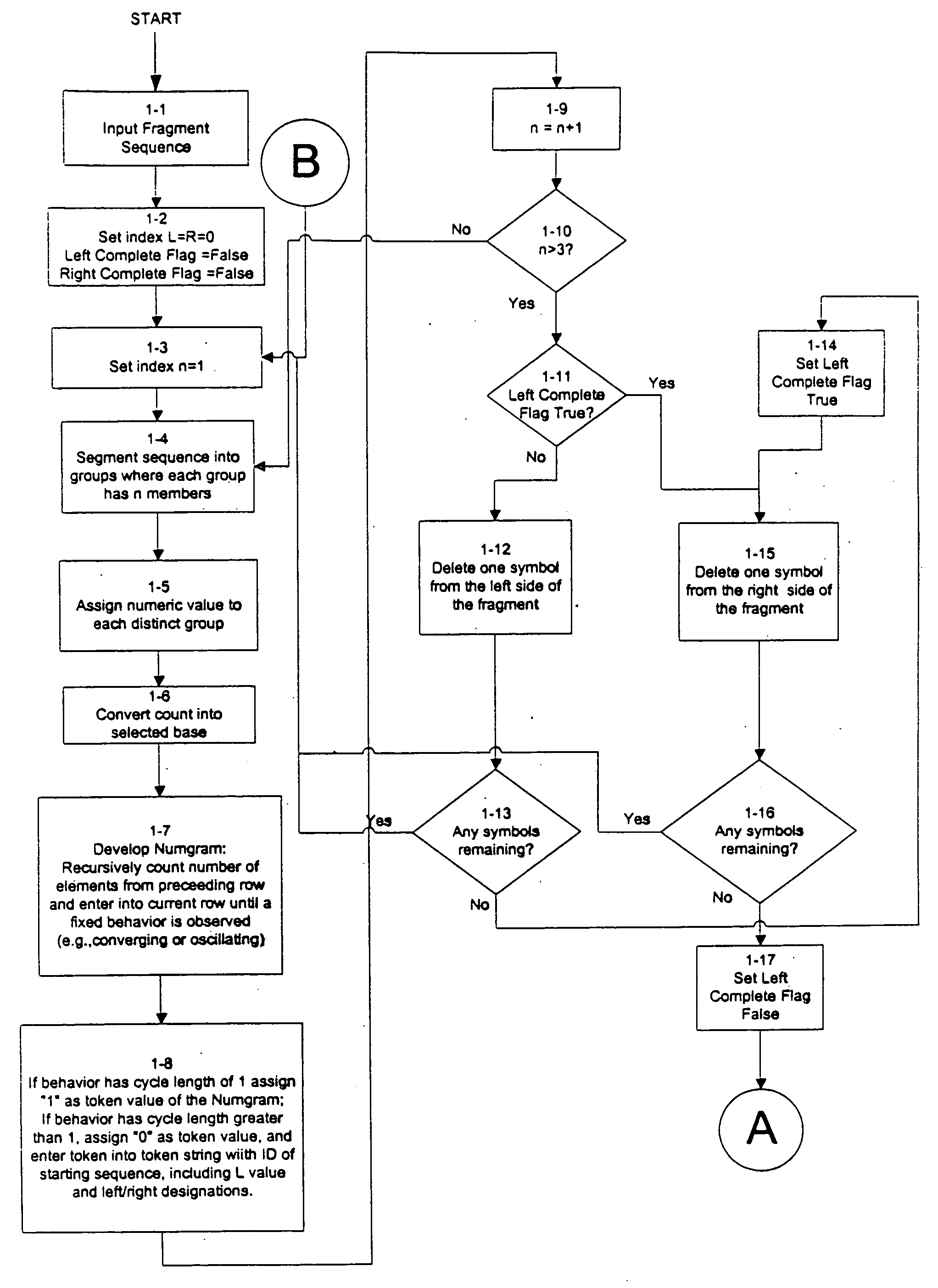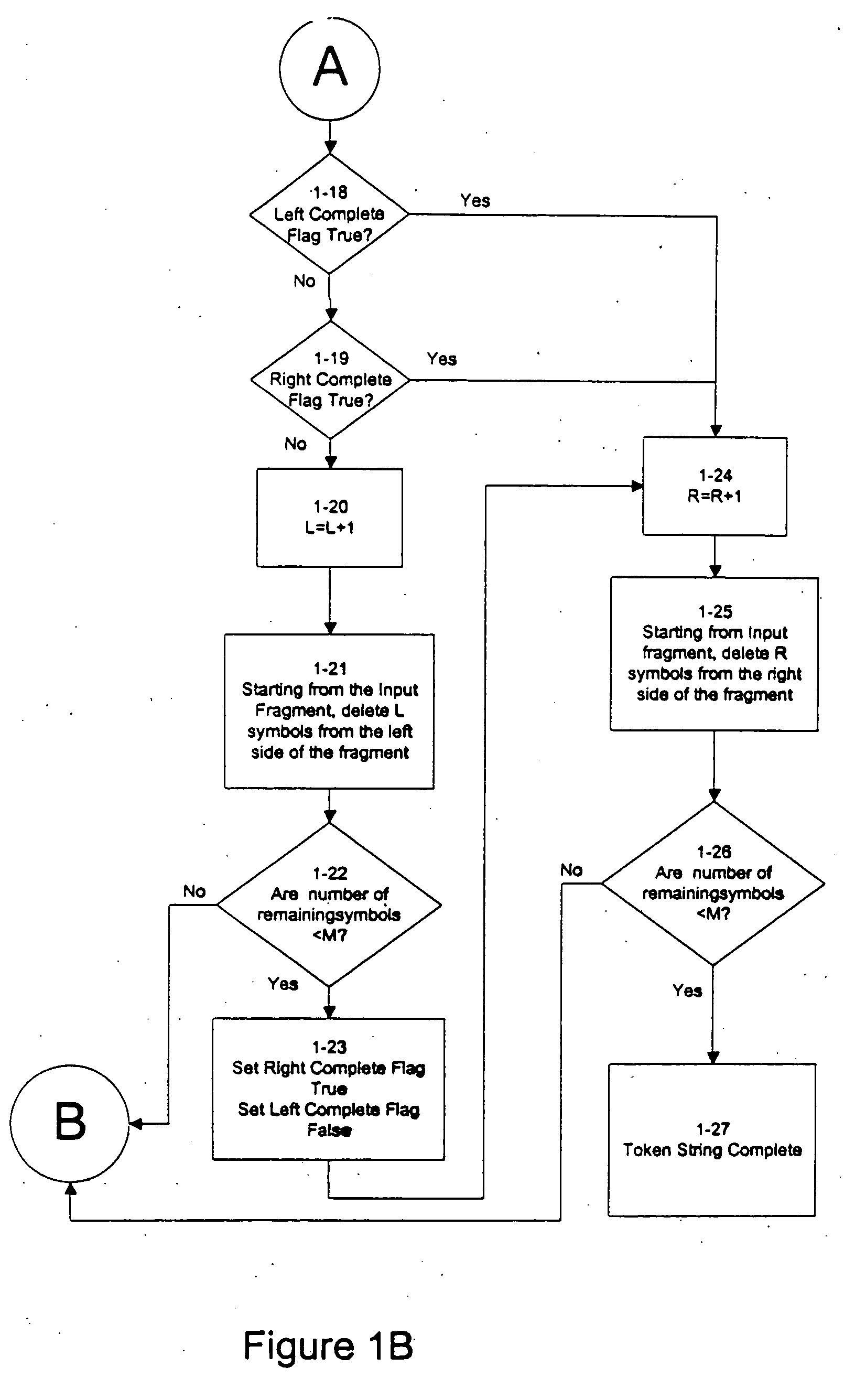Method for solving waveform sequence-matching problems using multidimensional attractor tokens
a multi-dimensional attractor and sequence-matching technology, applied in the field of solving waveform comparison, analysis and characterization, can solve the problems of computational burden, no known meta-meaning, and cost of computing fourier transformations
- Summary
- Abstract
- Description
- Claims
- Application Information
AI Technical Summary
Benefits of technology
Problems solved by technology
Method used
Image
Examples
Embodiment Construction
[0061] A method according to embodiments of the present invention is provided for creating software and hardware solutions for waveform, signal attribute or sequence-matching problems or frequency and frequency distribution problems where:
[0062] (1) the waveforms, signal attributes or sequences to be matched are exactly identical or may have missing or extra waveform, signal attribute or sequence elements within one or both waveform, signal attribute or sequences,
[0063] (2) the waveform, signal attribute or sequences to be matched may have regions or embedded sections with full or partial waveform, signal attribute or sequence overlaps or may have missing or extra waveform, signal attribute or sequence elements within one or both waveform, signal attribute or sequences,
[0064] (3) the symbols in each waveform, signal attribute or sequence description are all or in-part dissimilar sets, (4) the symbols composing the waveform, signal attribute or sequence have no meta-meaning allowi...
PUM
 Login to View More
Login to View More Abstract
Description
Claims
Application Information
 Login to View More
Login to View More - R&D
- Intellectual Property
- Life Sciences
- Materials
- Tech Scout
- Unparalleled Data Quality
- Higher Quality Content
- 60% Fewer Hallucinations
Browse by: Latest US Patents, China's latest patents, Technical Efficacy Thesaurus, Application Domain, Technology Topic, Popular Technical Reports.
© 2025 PatSnap. All rights reserved.Legal|Privacy policy|Modern Slavery Act Transparency Statement|Sitemap|About US| Contact US: help@patsnap.com



